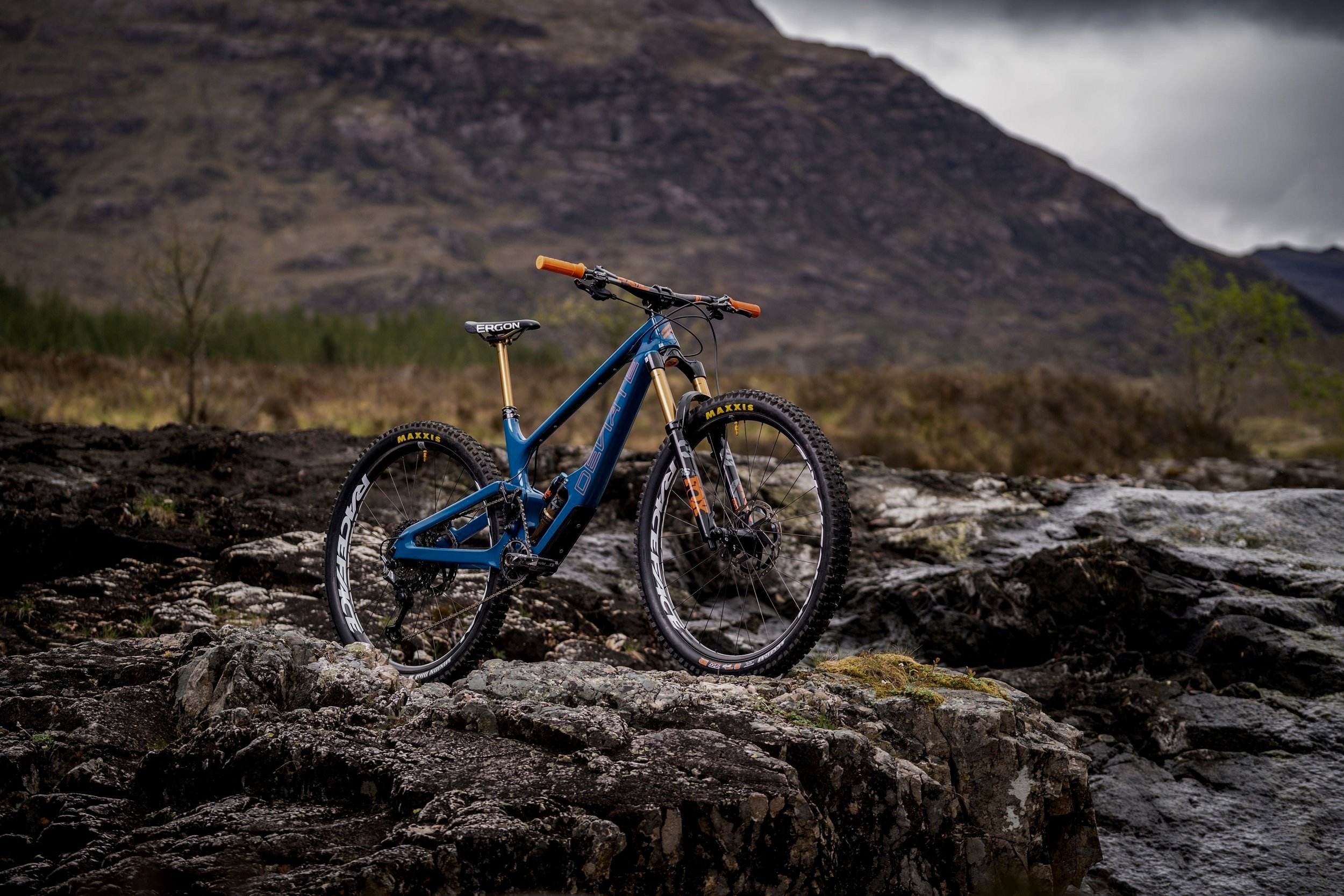
Why High-pivot?
Our High-Pivot Suspension Platform: Explained
Here at Deviate, we like to do things a little differently - hence our name. We are fully committed to the benefits of high-pivot suspension, because we think it’s the best suspension design around for the type of mountain bikes we design.
We’d like to explain why.
What makes idlers and high pivots ideal?
First of all, let’s look at the high pivot itself. It comprises of a meticulously placed pivot point that sits above the chainring and with this comes a rearward axle path, in short resulting in the bike lengthening through it’s travel. Due to this, an ‘idler wheel’ is required to sit above the chainring too as this essentially eliminates the pedal kickback generated by the lengthening of the bike (chain).
Essentially, the wheel moves in a rearward path, and echos the direction of the incoming hit. This gives the suspension more time to compress, letting the damper do its work. On a conventional bike, with a lower pivot, the wheel moves more vertically, so there is a component of the impact force that is pushing you backwards and trying to stretch the chainstays. Basically, high pivots help to stop the suspension from getting hooked up on square-edged hits, producing superior suspension performance through the chunk.
It is also possible, depending on the pivot placement, to dial in more anti-rise, which is the bike’s innate ability to resist extension under braking (so-called brake jack), and keep the suspension supple. And that rearward axle path, coupled with the anti-rise can also help to keep the wheelbase constant. We believe that we have struck the ideal balance between these variables, giving a supportive yet supple suspension platform right out of the box.

What are the benefits of high-pivot?
Virtually no pedal kickback whilst riding, delivering a more confidence inspiring ride
A rearward axle path allows the bike to extend and manoeuvre around square-edge hits, therefore maintaining speed
Geometry conservation under braking keeps you in the correct riding position, ideal for tackling the toughest of obstacles

ELIMINATE Pedal kickback
In most suspension designs, as you extend the suspension through its travel, the chainstay lengthens, to a greater or lesser extent. When pedalling, this exerts a force on the chain, which pulls on the chainring. The rider can feel this as the pedals ‘kicking’ underneath them. Conversely, if you stamp on the pedals, you’ll stiffen the suspension up.
As you can imagine, when riding rough terrain pedal kickback can quickly become an unwelcome riding characteristic. As a result, we designed our suspension platform to essentially eradicate this quirk, leaving you with a planted yet active suspension when called upon.
Geometry Conservation
Ben Jones, Deviate co-founder, expands:
“The Highlander has around 127% anti-rise, which means the suspension compresses slightly under braking. This results in a more stable geometry, because there is a reduced weight transfer to the front wheel, so you don’t get nearly as much front wheel dive - and you can therefore run a little less low speed front damping. You do lose some small bump sensitivity under braking, as there is more load on the shock, and you need to overcome this ‘preload’ before the suspension moves - but this is a small price to pay in a small aspect of suspension performance when compared to the huge benefits everywhere else.”
More Travel isn’t always better
Due to the nature of our high pivot suspension platform, the travel numbers you see on paper are often exceeded in terms of ride feel on the trail. Often referred to as a ‘bottomless’ feel, our Highlander II and Claymore both strike what we believe is the perfect balance between plushness and responsiveness, thanks to the meticulously positioned idler wheel.

The best of the best
Of course, all this attention to detail in the suspension department is echoed across the rest of our range. We’ve made sure that each bike we create is truly one of the most exceptional, well-thought out machines on the market - something echoed in the fantastic reviews and awards we’ve received including:
Pinkbike’s ‘Enduro Race Bike of Choice 2022’ (Claymore)
Pinkbike’s ‘Best Mountain Bike of 2022’ nomination (Claymore)
Top 5 Trail Bikes of 2023 by GMBN (Highlander II)
The overall design and geometry of our bikes is modern but balanced, keeping the ride poppy and fun whilst planted when you need it most. Key features such as grease ports and twin lipped seals reduce maintenance, meaning more time on the trails and lower upkeep costs.
We know nothing quite substitutes trying a bike first-hand which is why we offer demos from our HQ, via our dealer network and at events across the year. If you can’t find a demo center near you, get in touch and we’d be happy to look at alternative options.






